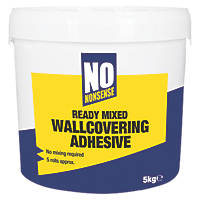82+ Wallpaper Paste Hot Or Cold Water
Stirring constantly bring the mixture to a boil on medium heat.
Wallpaper paste hot or cold water. In paperhanging cellulose has the highest water content of any paste in general use around 97. Apply the paper or border to the wall then flatten it with a wallpaper squeegee. When stiff remove from heat and add alum.
Some wallpapers recommend using a ready mixed paste whereas some wallpaper manufacturers may recommend their own ready mixed paste to ensure good adhesion to the surface the paper is being applied to. The main advantage of paste the wall wallpaper adhesive is that it causes less mess during the application process in comparison to other methods of wallpaper application. Use a wallpaper brush or roller to spread a thin layer of the paste on your wallpaper or border.
The paste can be thinned with a little warm water if if seems too thick. Cold water paste is suitable for most types of wallpaper and can be mixed to different strengths depending on the weight of the paper. Add the boiling water stirring constantly bring the mixture to a boil.
When it is stiff remove from the heat and add alum. Soak the paper for a few seconds in a small trough of water. Stir the mixture as you add hot tap water to it.
Although it is often more expensive than cold water paste varieties it offers a number of advantages in addition to convenience alone. Combine flour and sugar. The water will activate the adhesive but it can also wash the adhesive off so move quickly.
Similar to paste the wall adhesive comes pre mixed. Slowly add 1 cup of cold water and beat out any lumps. The ready mixed pastes do tend to be more expensive than say cold water mixed pastes.
